Maine’s natural landscapes are home to a captivating variety of frog species, each exhibiting unique traits and playing vital roles within their respective ecosystems. With about 8 different species, from the American Bullfrog to the Eastern American Toad, Maine’s amphibious diversity represents a microcosm of the larger world of herpetology.
Maine’s frog species differ not just in appearance and size but also in habitat preferences, breeding behaviors, diet, and even in the sounds they produce. As noted by Maine’s Department of Inland Fisheries & Wildlife, understanding these frog species provides key insights into the health of Maine’s various ecosystems due to their sensitivity to environmental changes.
In the following sections, we’ll meet each frog species residing in Maine in detail, uncovering their distinctive features, behaviors, and the roles they play within Maine’s ecosystems. From the bullfrog’s resonant calls to the wood frog’s astonishing winter survival strategy, you’ll gain a comprehensive understanding of these remarkable creatures and their fascinating world.
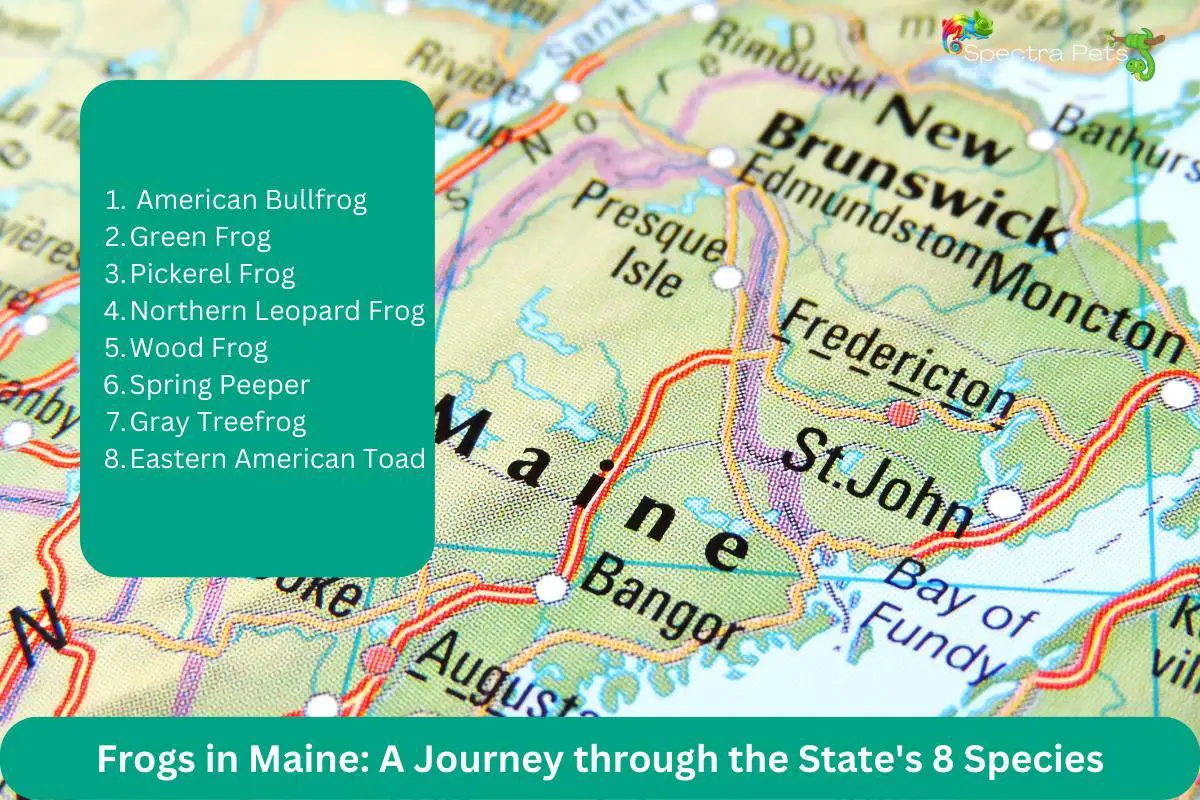
The 8 Different Species of Frogs in Maine
Ever been to a carnival? If you have, you know it’s a vibrant mix of different, colorful characters. Similarly, Maine’s frog scene is a rich mosaic of varied species, each with its unique signature tune and style. To give you a lay of the land, here’s a neat table featuring the star performers:
| Frog Species | Distinguishing Characteristics | Typical Habitat |
|---|---|---|
| American Bullfrog | Large size, deep bellowing croak | Lakes, ponds |
| Green Frog | Green skin, banjo-like call | Wetlands |
| Pickerel Frog | Squared spots, secretion harmful to predators | Moist, grassy areas |
| Northern Leopard Frog | Circular spots, long-legged | Marshes, grasslands |
| Wood Frog | Mask-like eye patch, ‘quacking’ call | Forested areas |
| Spring Peeper | ‘X’ mark on back, high-pitched peep | Forests near water bodies |
| Gray Treefrog | Grayish-green skin, ability to change color | Trees, shrubs |
| Eastern American Toad | Warty skin, parotoid glands | Gardens, woodlands |
This roster’s got some real charm, wouldn’t you agree? But hold on, we’re just getting started! Let’s get up close and personal with these fine creatures.
1. American Bullfrog
The American Bullfrog (Lithobates catesbeianus), the largest frog in North America, is a sight to behold. These behemoths, measuring up to 8 inches in length, are known for their robust bodies and prominent eardrums (tympanum) that are larger in males than females. Males are distinguished by their deep, resonant calls, often likened to the roar of a bull, which they use to claim their territories during breeding season.
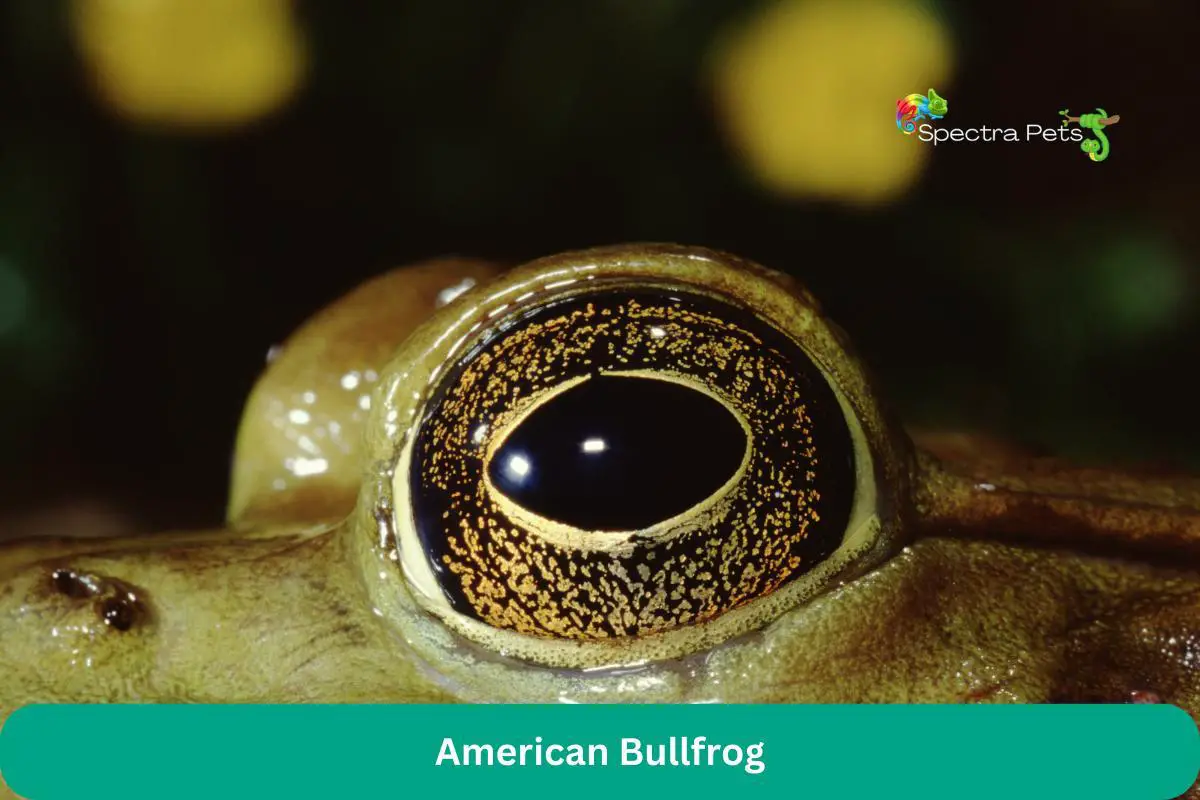
Bullfrogs prefer warm, still freshwater bodies like ponds and marshes with abundant aquatic vegetation. Their diet is versatile, including insects, fish, small mammals, birds, and even other amphibians. Yes, they’re known for their voracious appetite!
According to a study by the University of Maine, bullfrogs, due to their predatory habits, can influence the populations of their prey, which impacts the overall dynamics of the ecosystem.
2. Green Frog
The Green Frog (Lithobates clamitans) gets its name from its color. Slightly smaller than the bullfrog, they can reach up to 3.5 to 4 inches in length. A distinguishing feature of these frogs is a pair of dorsolateral ridges running down the sides of their back, which the bullfrog lacks.
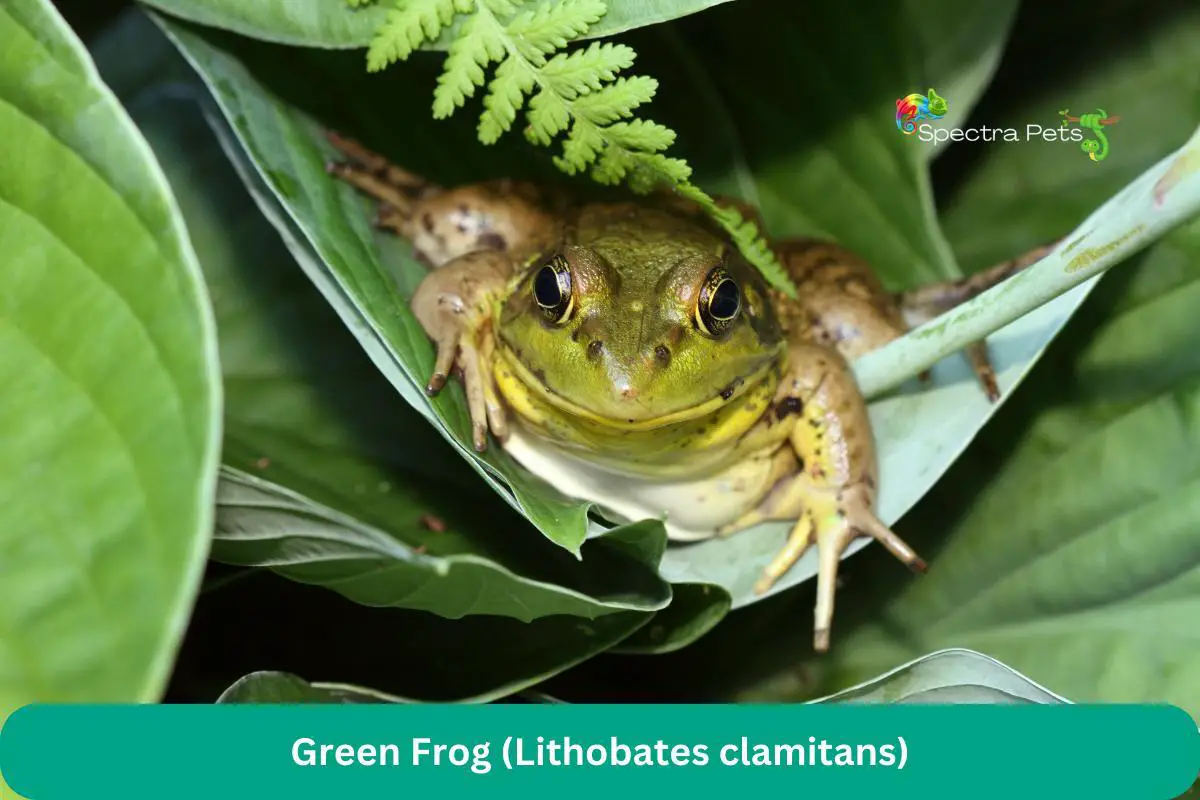
Green Frogs, like bullfrogs, are semi-aquatic and inhabit various freshwater habitats across Maine. They’re known for their “gunk” call, which sounds like a loose banjo string being plucked.
Interestingly, according to a study by the Maine Amphibian and Reptile Atlasing Project, Green Frogs are more tolerant of habitat disturbances than some other frog species, making them more adaptable to changing environmental conditions.
3. Pickerel Frog
The Pickerel Frog (Lithobates palustris) is a relatively small frog, growing up to 2-3 inches long. What makes them stand out is the series of rectangular spots down their back, appearing as if neatly arranged in two rows. These frogs have a secret weapon too – their skin secretions are irritating to human skin and toxic to some predators.
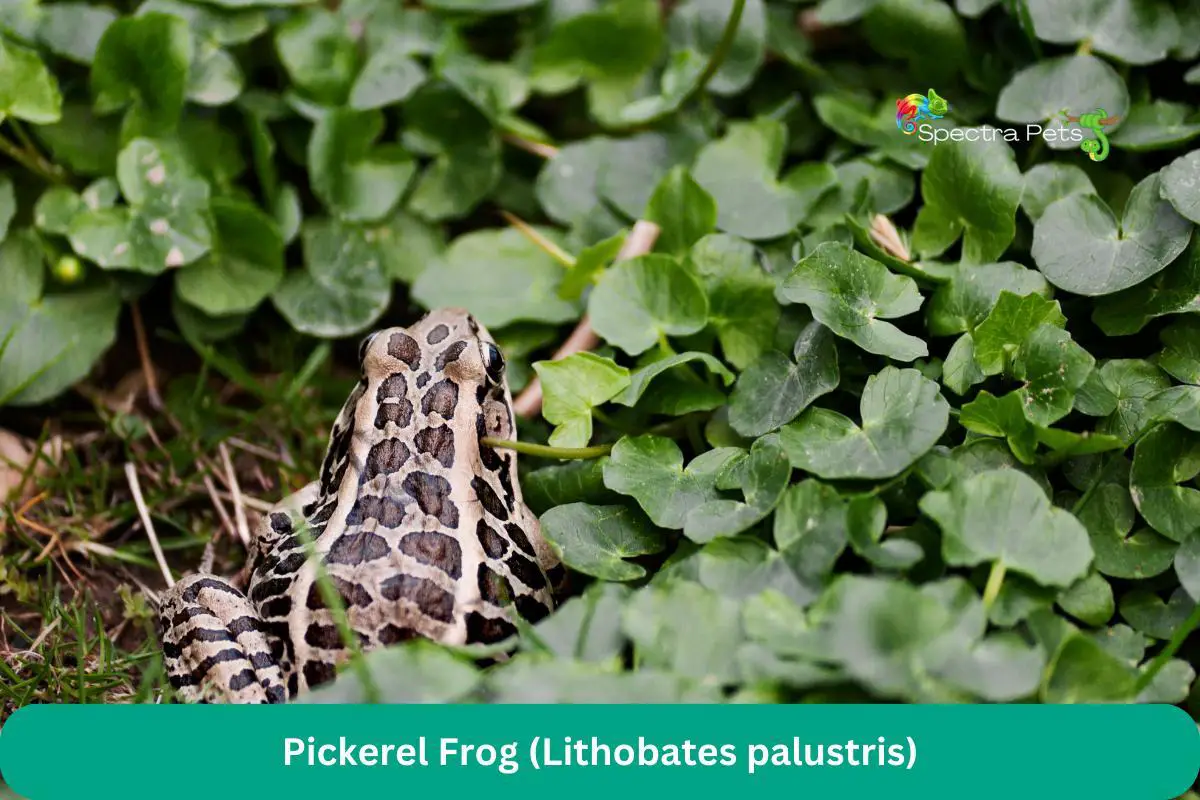
They prefer cool, clear waters and are often found near brooks, bogs, and swamps. They feed on a variety of invertebrates like spiders, beetles, and ants.
Dr. David M. Green, a renowned herpetologist, suggests that the declining populations of Pickerel Frogs in some regions could be attributed to water pollution, indicating their sensitivity to environmental changes.
4. Northern Leopard Frog
The Northern Leopard Frog (Lithobates pipiens) is known for the array of rounded spots scattered across its back and sides, much like a leopard’s coat. Growing up to 4 inches long, they are distinguished by a set of light-colored dorsolateral ridges.

They inhabit a variety of wetland habitats but move to grasslands during summer. Their diet primarily consists of insects, spiders, and small invertebrates.
Northern Leopard Frogs are known for their mass migrations to breeding ponds in early spring, a phenomenon studied extensively by ecologists for its implications on genetic diversity and population dynamics.
5. Wood Frog
The Wood Frog (Lithobates sylvaticus) is a small, brown frog known for a dark ‘robber’s mask’ across its eyes. These frogs measure up to 2.5 inches in length.
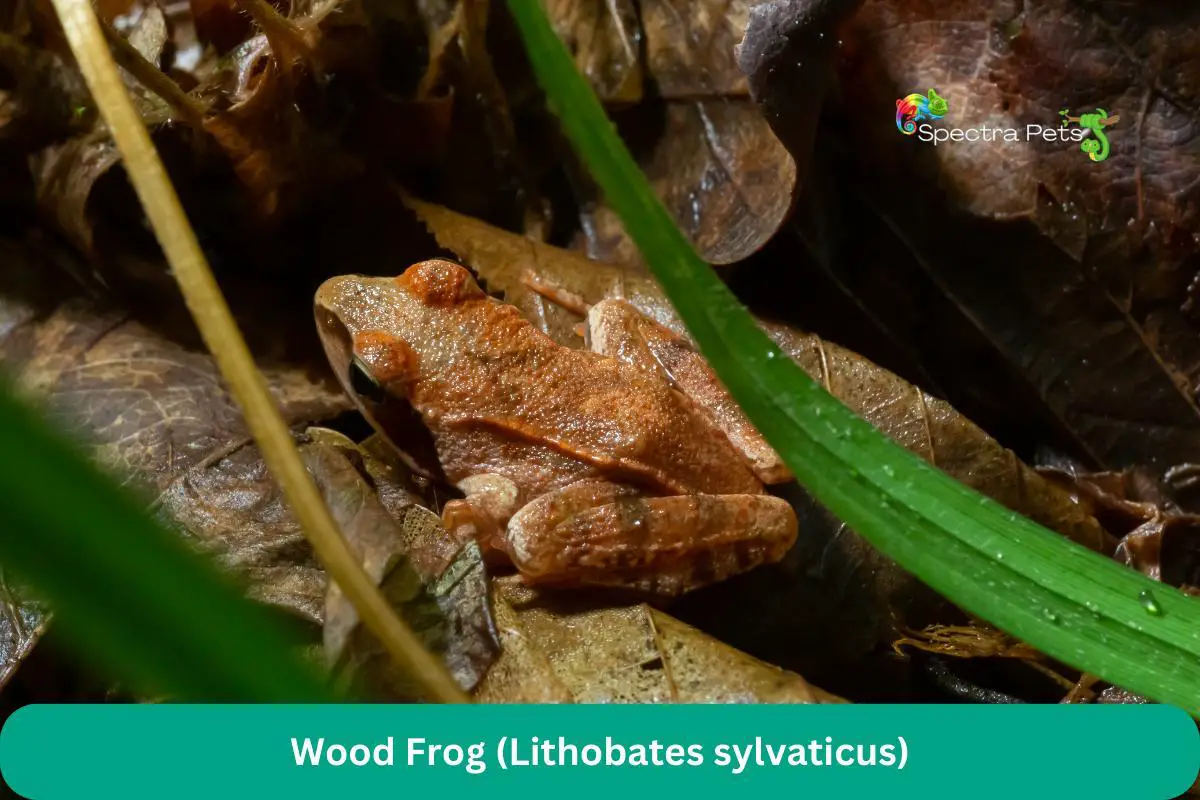
Wood Frogs are true survivalists. They can survive being frozen solid during winter, only to thaw out and hop away in spring! This unique adaptation has been the subject of numerous scientific studies.
They are usually found in moist woodlands and breed in vernal pools. Their diet consists of various invertebrates, including beetles, spiders, and slugs.
6. Spring Peeper
The Spring Peeper (Pseudacris crucifer) is a tiny frog with a big voice. Measuring just about 1 inch, these frogs are known for their high-pitched “peep” that signals the onset of spring.
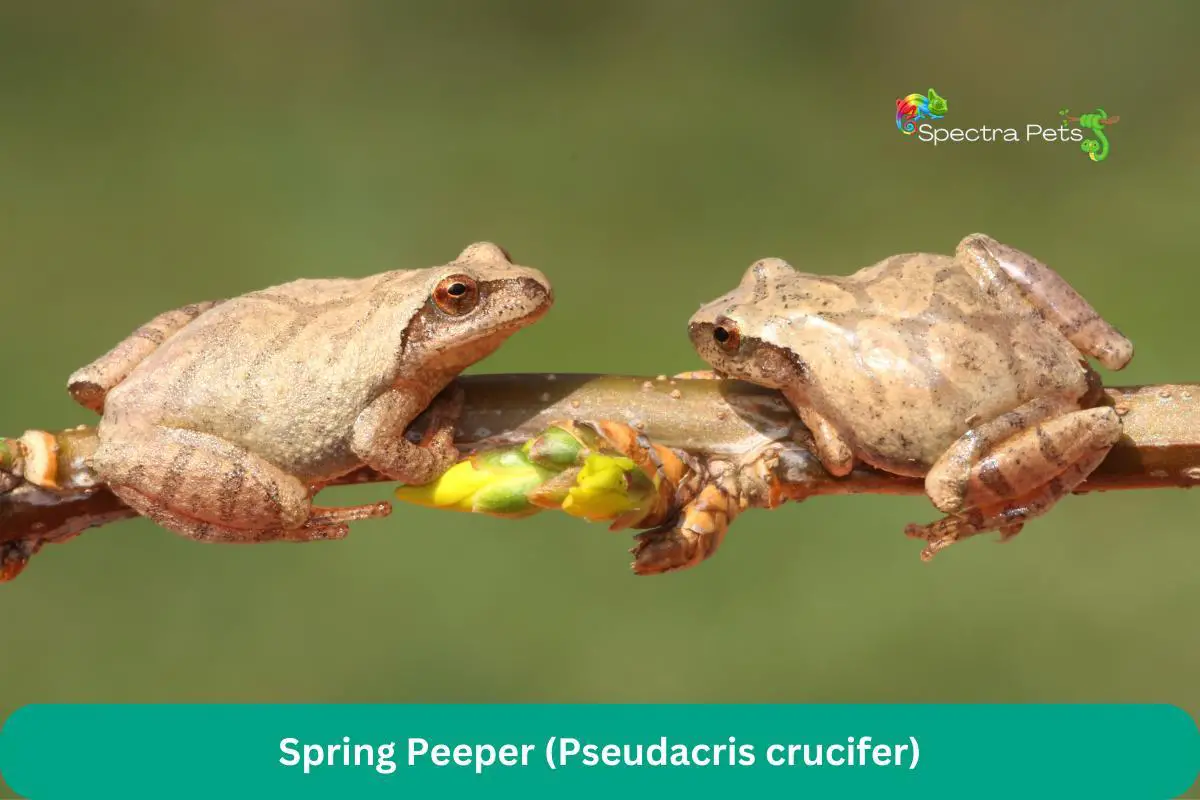
A distinct “X” mark on their back and large toe pads for climbing sets them apart. They are found in wooded areas and marshy spots, and their diet includes ants, beetles, and spiders.
The Spring Peeper’s call is a classic sound of rural Maine and has been highlighted by the Maine Audubon for its role in the auditory biodiversity of the state.
7. Gray Treefrog
The Gray Treefrog (Hyla versicolor) is a small, arboreal frog that can change its color to match its surroundings. These frogs, measuring up to 2 inches, are known for their toe pads that help them cling to tree bark and leaves.
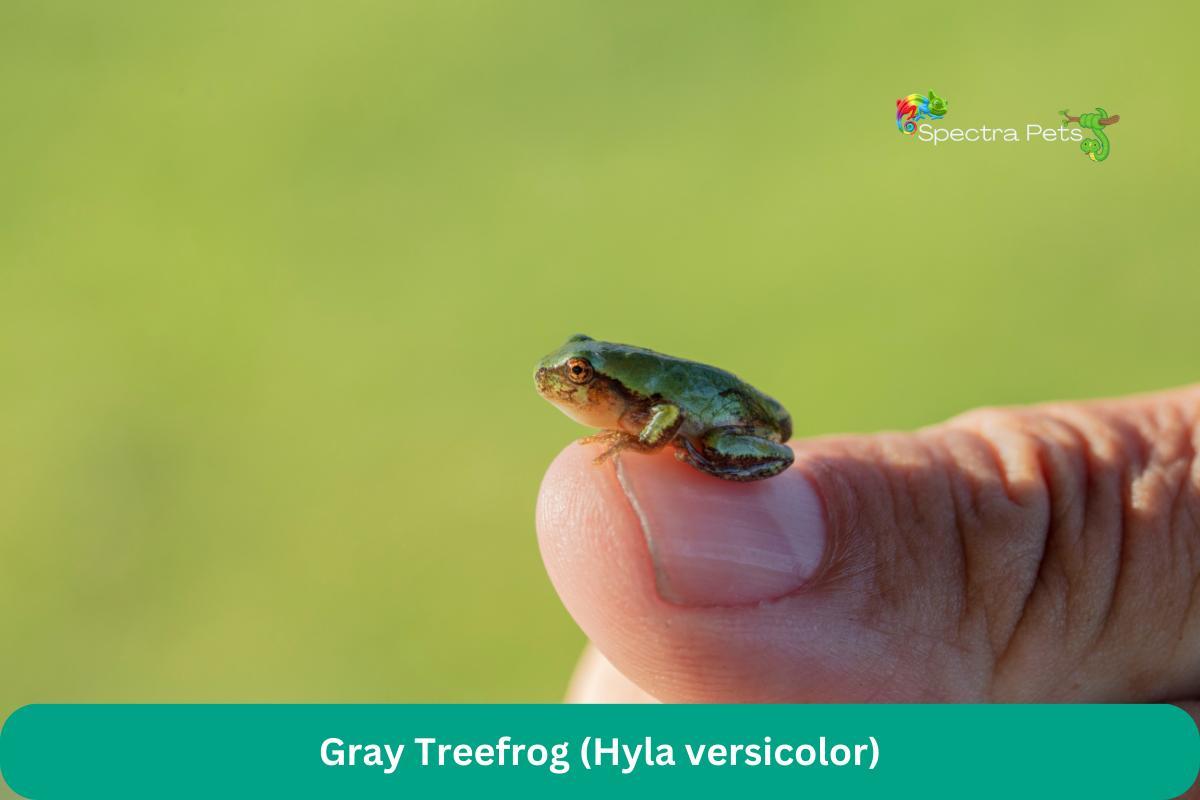
They inhabit a variety of habitats, from forests to suburban backyards, and feast on insects and spiders. Their high-pitched, bird-like trilling is a common sound in Maine’s summer nights.
Related Article: Tree Frogs in Maine
8. Eastern American Toad
The Eastern American Toad (Anaxyrus americanus) isn’t a frog but deserves a mention. They are known for their warty skin and the large parotoid glands behind their eyes, which produce a toxin as a defense mechanism.
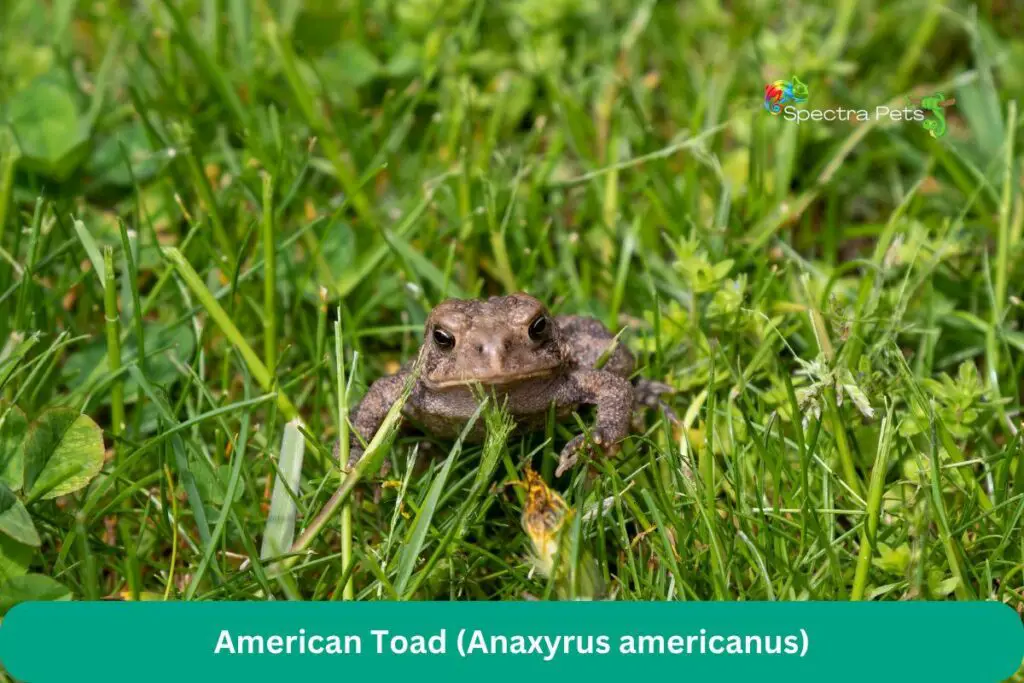
These toads are found in a variety of habitats, from forests to gardens, and their diet consists of a range of invertebrates. They are beneficial to humans as they control pests in gardens and farms.
Their “musical” trilling call, often heard after a warm rain, is a characteristic sound in the Maine countryside.
Unique Characteristics of Maine Frogs: [Your Field Guide]
There’s more to these hoppers than meets the eye. Yes, they’ve got an undeniable charm, but let’s not forget their distinctive features and behaviors. And who knows? You might just end up with a newfound appreciation for these critters!
Frog’s Physical Features
Can’t tell your bullfrog from your pickerel frog? You’re not alone, folks! But fear not, here’s a handy cheat sheet.
- American Bullfrog: Its jumbo size makes it stand out. Their eardrums (or tympanums, if you fancy the scientific term) are larger in males than females.
- Green Frog: Spot this medium-sized frog by its prominent dorsolateral ridges running from its eyes down its back.
- Pickerel Frog: Squared-off spots are this frog’s claim to fame, making it easy to identify.
- Northern Leopard Frog: Sporting rounded spots and long legs, this fella has a distinctive, sleek look.
- Wood Frog: The dark ‘robber’s mask’ around its eyes gives this frog a real mysterious appeal.
- Spring Peeper: Look for an X-shaped marking on the back. Oh, and they’re tiny!
- Gray Treefrog: Masters of disguise, these frogs can change their color to match their surroundings.
- Eastern American Toad: Not technically a frog, but part of the family. They’re warty, with two large parotoid glands behind the eyes.
Frog’s Behavioral Traits
Now that you’re a pro at spotting frogs, let’s talk about their habits. Yup, each species has a behavioral quirk or two that make them truly unique.
- American Bullfrog: They’re night owls, or should we say, night frogs! You’ll often spot them lounging in the sun or taking a leisurely swim.
- Green Frog: These fellas are quite territorial, especially the males. So, if you see a frog-off, you know why!
- Pickerel Frog: If threatened, they’ll secrete a skin toxin that predators find distasteful. Talk about self-defense!
- Northern Leopard Frog: These guys are famous for their jumping skills, making long leaps to catch their prey or evade danger.
- Wood Frog: As the only frog found north of the Arctic Circle, they have a knack for freezing solid in winter and reviving in spring. How cool is that?
- Spring Peeper: They might be small, but they’re quite the singers, with each male having a unique peep to attract the ladies.
- Gray Treefrog: They love climbing trees and can often be found hanging out on tree trunks and leaves.
- Eastern American Toad: This one’s a landlubber, often found digging burrows in gardens and forests.
Frog’s Vocalizations
Ever wondered what all that nighttime croaking and chirping is about? Well, that’s just our froggy friends having a chat. Each species has a distinctive call that sets it apart. From the American Bullfrog’s resonant croak to the Green Frog’s banjo strum and the Spring Peeper’s high-pitched peep – it’s a regular froggy choir out there!
| Frog Species | Vocalization |
|---|---|
| American Bullfrog | A deep, resonant “rum-rum-rum”, similar to the distant sound of a cow mooing. |
| Green Frog | Often compared to the sound of a loose banjo string being plucked, “gung-gung-gung”. |
| Pickerel Frog | A low-pitched snore lasting for a few seconds, “rrrr-rrrr”. |
| Northern Leopard Frog | A series of short, distinct, guttural grunts or croaks, “snore-chuckle-growl”. |
| Wood Frog | Rapid duck-like quacking, “quack-quack-quack”. |
| Spring Peeper | High-pitched whistling or peeping sound, “peep-peep-peep”. |
| Gray Treefrog | A slow, musical trill, like a bird’s song, lasting for several seconds. |
| Eastern American Toad | A high-pitched, long, musical trill, lasting up to 30 seconds. |
The Life Cycle of Frogs in Maine
From tiny eggs to hopping adults, the journey of a frog is quite a tale! So, let’s dive into this transformative journey, shall we?
The Egg Stage
It all begins in the water. Each spring, female frogs lay masses of eggs in Maine’s lakes, ponds, and wetlands. These aren’t your typical chicken eggs, folks. Frog eggs are surrounded by a clear, gel-like substance that protects them from predators and the elements.
The Tadpole Stage
After a week or two, out pop the tadpoles! These tiny, fish-like critters are the next stage in a frog’s life cycle. Armed with gills for breathing, they’re all set to explore their aquatic homes. Their diet? Mostly algae and plant matter.
The Froglet Stage
This is where things get really interesting! After about six weeks, the tadpoles start growing legs and their tails begin to shrink. They develop lungs to breathe air, and their diet shifts to insects. This is the “froglet” stage – not quite a tadpole, not yet a frog.
The Adult Stage
Fast forward a few weeks, and voila! The froglets have now transformed into fully grown adult frogs. They move out of their aquatic homes and begin their life on land, hunting for food, and looking for mates.
Now, isn’t that an incredible journey? But remember, folks, this journey is fraught with dangers. Only a handful out of hundreds of eggs survive to adulthood, thanks to predators, harsh weather, and other challenges. Makes you appreciate our froggy friends a bit more, doesn’t it?
The Role of Frogs in Maine’s Ecosystem
Alright, so we’ve learned quite a bit about Maine’s frogs, their unique features, their captivating life cycle. But what role do they play in the grand scheme of things?
Frogs as Predators
Firstly, adult frogs are quite the hunters. Using their long, sticky tongues, they gulp down a variety of critters – insects, spiders, slugs, even other smaller frogs! By controlling these populations, they play a crucial role in maintaining balance in the ecosystem.
Frogs as Prey
On the flip side, frogs also feature on the dinner menu of a number of predators. Birds, mammals, reptiles, even some fish wouldn’t mind a froggy feast. Hence, frogs play a critical role in the food chain, serving as both predators and prey.
Frogs as Indicators of Environmental Health
Frogs are often called “indicator species.” This means they are like canaries in a coal mine for our ecosystems. Their permeable skin makes them highly sensitive to changes in the environment, such as pollution or climate change. So, a decline in frog populations could be a red flag, signaling that all’s not well with our environment.
The Importance of Conservation of Frogs in Maine
Remember when we said frogs are like canaries in a coal mine? Well, their decline globally is a serious concern and Maine is no exception. They play a pivotal role in the ecosystem, so let’s delve deeper into why protecting them is so important.
Impact of Habitat Loss
Unplanned urbanization, pollution, and climate change are wreaking havoc on frog habitats. Forests are cleared, wetlands are drained, and water bodies are polluted. Our amphibian friends are losing their homes, and it’s impacting their survival big time.
Threat from Diseases
Frogs in Maine are not just battling habitat loss, they’re also fighting a war against diseases. In recent years, outbreaks of a deadly fungal disease, Chytridiomycosis, have been reported in several species. It’s a grim scenario indeed.
Importance of Genetic Diversity
Protecting different frog species is also crucial for maintaining genetic diversity. Each species has unique genetic traits that help them survive in their specific habitats. Losing a species could mean losing those unique traits forever. And in the game of survival, diversity is key.
Ways to Contribute to Frog Conservation
Now that we’ve painted a rather bleak picture, you might be thinking, “But what can I do to help?” Well, there’s plenty you can do to chip in. And no, you don’t need to be a scientist or an environmentalist to make a difference!
Create a Frog-friendly Backyard
One of the simplest ways to help is by creating a frog-friendly backyard. Install a small pond, maintain a patch of native plants, avoid using pesticides, and provide hiding spots. Before you know it, you’ll have some new froggy tenants!
Participate in Citizen Science Programs
Join a local frog monitoring program. Your job? Just listen to the frogs in your area and record what you hear. These observations help scientists keep track of frog populations and detect any potential problems early on.
Spread the Word
Talk about frogs! Share your knowledge with your friends, family, and community. The more people know about these amazing creatures and the challenges they face, the better our chances of protecting them.
Wrapping Up
Well, folks, that’s a wrap! We’ve hopped from one fascinating aspect of Maine’s frogs to another, learned a fair bit about these charismatic critters, their unique quirks, and their epic life journey. But remember, with great knowledge comes great responsibility.
Frogs are like tiny threads holding the tapestry of Maine’s ecosystems together. If we lose them, the whole tapestry could unravel. They’re our little green barometers, signaling the health of our environment. And the signs they’re showing us now are indeed worrisome.
But despair not, for every cloud has a silver lining. We all have the power to turn things around. Whether it’s creating frog-friendly spaces in our backyards, participating in citizen science programs, or simply spreading the word about the plight of frogs – every small action can make a big difference.
So, the next time you hear a chorus of croaks in the cool Maine evening, take a moment to appreciate these remarkable creatures. Each croak is a story of survival, a song of resilience, and a call to action. Let’s not let their song fade into silence. Here’s to the magnificent frogs of Maine!
